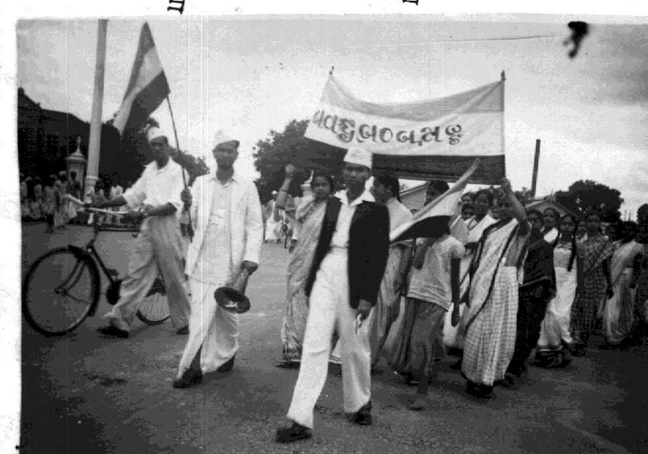 |
Peoples' movements and protests |
 |
|
MobilizationsLatin American wars of independenceNorth American war of independenceSlave uprising in HaitiIrish nationalism and Sinn FéinRussian revolutionIndia independence movementChinese revolutionAlgerian war of independencePalestinian movementVietnam warBreton movementBasque movementNorwegian opposition to EUTo National movementsTo main page |
Indian Independence Movement
The Indian National Congress was formed in the 1890s by English-educated Indians, and the purpose was to submissively ask the English rulers to take more account of Indian interests. Therefore, competing national movements also arose. The most important was the Hindu radical movement that had its ideological origins in the so-called Bengali Renaissance in the 1840s. It organized boycotts of English enterprises under the slogan ”buy Indian”, it carried out attacks on English occupation authorities, it organized rites in which the casteless were ”purified” and raised in the Hindu community, and it became a global event when it announced a campaign against the English the proposal to divide Bengal into two provinces in 1905. However, its activists were thrown in jail and until the end of World War I it was fairly quiet. But then many prominent Indians began to mutter that the English had betrayed certain constitutional promises they had made to get Indians into their army during the war. The English responded with prisons and the National Congress announced a strike. Much to its dismay, the strike was a resounding success. The English responded with unplanned terror and more and more Indians began to see it as enemies. The model for the strikes had been designed on a small scale during the war when Mohandas Gandhi had led the indigo cultivators’ strike. It was something new: an economic action with a political edge against the regime. This strategy would dominate National Congress actions until independence. New was also the mass organization. Previously, prominent people had dominated the movement. Now the striking delegates elected to the National Congress, establishing a popular movement tradition in India that is still alive. After a good start to the strike, the movement came to an end after a year or so. After a riot in which, among other things, police officers were killed, Gandhi canceled on his own initiative the entire movement, which thus lost its national center. It was not until the early 1930s that this center would re-emerge. Partly in the form of a new campaign from the National Congress – a ”disobedience campaign” when Indians refused to cooperate in any form with English authorities; the signal action was a hundred-thousand-strong manifestation to illegally mine salt from the sea. And partly in the form of an independent peasant movement. The disobedience campaign was stopped when the British agreed to free elections to Indian provincial parliaments. Politics seemed to have entered sleepy parliamentary, albeit reformist, paths when war broke out and England began to exploit India for the war. The National Congress saw this as a breach of promise and started a new disobedience campaign – the Quit India campaign – which in turn announced land occupations and local revolutions in the villages, most resoundingly in Telengana in the south, that managed themselves without the National Congress. At the end of the war, the Indian Navy also mutinied and joined the National Congress, and the British saw fit to go home. Reading
|

